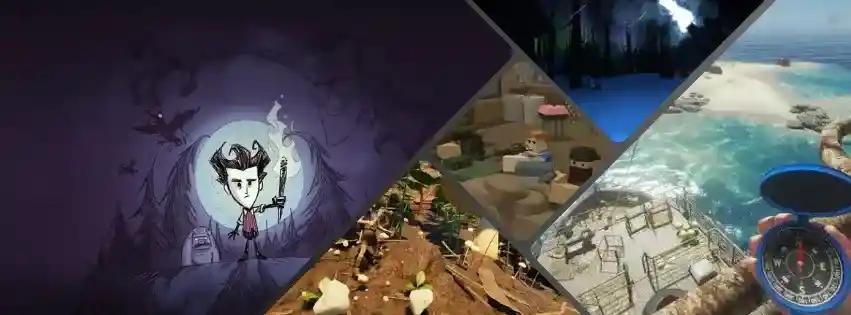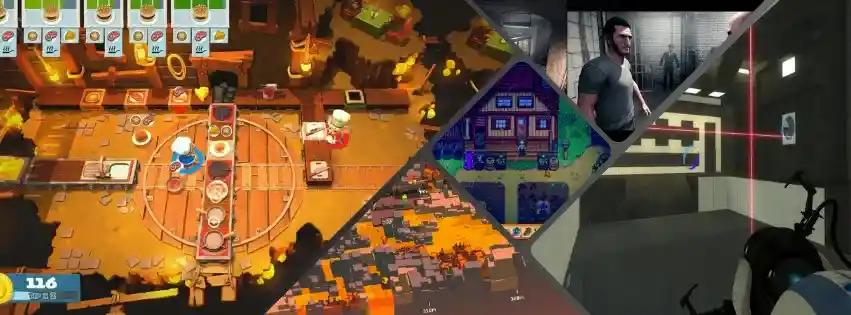Looking for the best games you can play offline on low-end hardware? This guide highlights offline games that run smoothly on low-end PCs using integrated graphics. It’s for players with i3/Ryzen 3-class CPUs, 8GB RAM, and UHD/Vega/Iris Xe GPUs who want reliable performance without online requirements. We ranked titles by offline functionality, proven iGPU stability, replay depth, enjoyment at low settings, and approachability. The scope includes a top 10 list plus five honorable mentions, with recent releases represented where they meet low-end and offline criteria. Expect concise picks, clear reasoning, and no tolerance for bloated installs or hidden online checks.
This article is part of our guide on the Best Low-End PC Games
How We Ranked These Games
We used a weighted rubric emphasizing offline play and low-end performance, supported by community benchmarks and minimum specs. The table below shows each factor and why it impacts real-world play on integrated GPUs.
Criterion | Weight | Why It Matters |
|---|---|---|
Low end compatibility | 40% | Ensures stable 30+ FPS at 720p–1080p on integrated graphics with 8GB RAM. |
Offline play quality | 30% | Guarantees the full game works without persistent servers or online checks. |
Replay value | 15% | Maximizes hours per gigabyte via modes, routes, and systems. |
Engagement fun | 10% | Keeps gameplay satisfying even with low visual settings. |
Accessibility onboarding | 5% | Makes it easier for newcomers to learn and enjoy on budget rigs. |
Related reading: Best Open World Games for Low-End PCs
What do we mean with low-end hardware?
So what exactly do we mean when we say low-end hardware? We have to come up with a baseline somehow. To run the games we chose smoothly, make sure your laptop or pc matches at least the minimum specs:
Component | Minimum Requirement | Recommended |
|---|---|---|
CPU | Intel Core i3 / AMD Ryzen 3 (8th gen or newer) | Intel Core i5 / Ryzen 5 |
RAM | 8GB | 16GB |
Storage | 256GB SSD | 512GB SSD |
Graphics | Integrated (Intel UHD / AMD Vega) | Iris Xe or better |
Display | 1080p resolution | 1080p IPS panel |
OS | Windows 10 or 11 | Windows 11 |
Related reading: Best Multiplayer Games for Low-End PCs
The Top 10 Best Offline Games for Low-End PCs
Below are our ranked picks from #1 to #10. Each game earned its place by pairing strong offline support with documented iGPU performance and worthwhile longevity without bloated installs.

Stardew Valley
“The definitive cozy farming RPG with hundreds of hours of offline content”
Editors Take
Stardew Valley tops this list because it nails low-spec reliability and deep offline longevity. It’s tiny to install yet offers a multi-year drip of progression, seasonal loops, and cozy routines that hold up at 720p–1080p on Intel UHD or Iris Xe. The whole game is playable offline after activation, and performance isn’t tied to fancy shaders or a heavy launcher. It’s also welcoming—clear tutorials, readable UI, and flexible goals support new players without forcing grind. For low-end PCs, few games combine breadth, stability, and minimal footprint so convincingly.
Full Details
Game Experience

Vampire Survivors
“Addictive minimalist roguelite that runs flawlessly on any integrated GPU”
Editors Take
Vampire Survivors is the poster child for pick-up-and-play on low-end hardware. Its minimalist rendering keeps frame rates high on any modern integrated GPU, and the install is well under a gigabyte. Run-based structure and a gentle early curve make it approachable, while meta progression and challenge stages drive long-term engagement. Crucially, it’s fully playable offline and free of bloated launchers. The short session format fits budget laptops and shared machines, where you can drop in for a 20-minute run without worrying about background services or shader compilation stalls.
Full Details
Game Experience

Undertale
“Genre-defying RPG phenomenon that runs on a calculator”
Editors Take
Undertale remains a landmark narrative RPG that’s purpose-built for low-end systems. Its tiny footprint and ultra-light visuals mean it runs on practically any Windows PC, while its branching routes and multiple endings create real replay value without demanding hardware. The entire experience is offline, and performance isn’t sensitive to settings—perfect for integrated GPUs. What elevates it here is how its inventive combat and story choices stay engaging at low fidelity; you lose nothing by turning settings down. For players on modest machines, that’s rare and important.
Full Details
Game Experience

Slay the Spire
“Genre-defining deckbuilder roguelike that runs on a toaster”
Editors Take
Slay the Spire’s turn-based design makes it a perfect match for integrated graphics—no frame pacing worries, no shader stutter drama. It’s small to install, runs on decade-old hardware, and every mode works offline. What secures a top-five slot is the enduring depth: procedural runs, four distinct characters, Ascension scaling, and Daily Climbs keep you iterating on builds for hundreds of hours. Card readability and clean effects mean you don’t need high settings to enjoy it, and controller support is rock solid for couch play on budget rigs.
Full Details
Game Experience

FTL: Faster Than Light
“Iconic spaceship roguelike that defined a genre and runs on anything”
Editors Take
FTL is foundational for low-end PC gaming: ultra-light install, elegant 2D presentation, and a pausable real-time loop that’s friendly to integrated GPUs. Its depth—ship unlocks, events, crew builds, and emergent crises—keeps runs fresh for years. Everything is offline, and a DRM-free store option exists if you want zero platform overhead. The difficulty is brisk, but pausing lets you learn safely. In a field that penalizes bloat and online dependencies, FTL thrives by doing the opposite: maximum tension and strategy with basically no hardware demands.
Full Details
Game Experience

Terraria
“Massive 2D sandbox with infinite replayability and tiny system requirements”
Editors Take
Terraria’s 2D sandbox is famously light on resources yet heavy on content. Even modest laptops handle sprawling worlds at 1080p with integrated graphics, and the full experience is available offline. The sheer volume—biomes, bosses, crafting, and events—delivers hundreds of hours without large installs or live-service hooks. Onboarding is its only real blemish; many new players consult guides to navigate early progression. Still, for low-end PCs, it’s a near-ideal blend of performance, creativity, and long-term goals without the baggage of massive downloads or background launchers.
Full Details
Game Experience

Celeste
“Award-winning precision platformer with best-in-class accessibility options”
Editors Take
Celeste is a celebrated platformer that respects both your hardware and your time. Its minimalist art and tight code run flawlessly on integrated GPUs at 1080p, and it’s entirely offline. What sets it apart for this list is how it pairs elite-level platforming with industry-leading accessibility: Assist Mode can tailor difficulty to your needs without diluting design. The install is small, sessions are flexible, and the level structure—B- and C-sides—keeps skilled players engaged for dozens of hours. It’s a rare high-skill game that also welcomes newcomers.
Full Details
Game Experience

Balatro
“2024's viral poker roguelike sensation that runs on any PC”
Editors Take
Balatro represents the modern, low-spec ideal: a 2024 release that’s wildly replayable, feather-light on storage, and tuned to run on any iGPU. The poker-meets-roguelike design creates clever decision-making without relying on GPU horsepower, and runs fit neatly into short sessions. It’s fully offline, free of secondary launchers, and updates quickly on small connections. As a recent hit that doesn’t abandon low-end players, it fills a crucial recency slot while honoring our anti-bloat and offline-first guardrails. A smart new-school pick for weak hardware.
Full Details
Game Experience

Don't Starve
“Unforgiving survival roguelike with Tim Burton aesthetics”
Editors Take
Don’t Starve brings the survival-crafting slot this list needed, and it’s a smart fit for integrated graphics. The hand-drawn look keeps performance steady on low-end machines, and the full experience is offline. Permadeath and seasonal hazards deliver high replay value as you internalize crafting chains and resource routes. It lands lower than others due to a sharp onboarding cliff—little is explained, and early runs can be punishing—but for players who enjoy learning by failing, it becomes endlessly rewarding without a heavy install or online dependencies.
Full Details
Game Experience

Portal 2
“Valve's comedic puzzle masterpiece, now perfectly suited for integrated graphics”
Editors Take
Portal 2 showcases how certain older AAA titles have aged into low-end compatibility. Source engine optimizations let it run acceptably on Intel UHD/Iris Xe at 720p–1080p low, and the single-player campaign is fully offline. It offers genre diversity for this list—first-person puzzling with standout writing—without the bloat of modern installs or live-service tie-ins. While not as featherweight as the 2D picks and lacking the infinite replay of roguelikes, it brings prestige and a polished, accessible experience that still respects budget hardware.
Full Details
Game Experience
Related reading: LAN Party Games: Best Titles for Local Multiplayer Gaming
Honorable Mentions
These five titles narrowly missed the top 10 for specific reasons noted in our commentary—usually a steeper learning curve or slightly less reliable performance on older iGPUs—but remain excellent offline choices.
Dead Cells
Dead Cells delivers buttery combat and strong performance on integrated GPUs at 1080p low, with a compact install and full offline play. Its blend of roguelike runs and metroidvania routing gives substantial replay value, and controller feel is excellent. It narrowly misses the top 10 because its steep difficulty and mastery-first design can gate progress for newer players, reducing broad accessibility. Compared with our top entries, it also offers less offline variety outside core runs. Still, if you want fast action that respects weak hardware, it’s a standout.
Pizza Tower
Pizza Tower is a 2023 gem that screams on low-end PCs—pixel art, tiny install, and no reliance on online services. Speedrun-friendly level design and sharp movement create an addictive loop, and it’s fully playable offline. It just misses the top 10 due to narrower scope and a shorter main runtime compared with our sandboxes and roguelikes. Its skill-based progression also limits approachability for casual players. For those who love high-speed platforming and want a modern title that runs on anything, it’s an easy recommendation.
Into the Breach
Into the Breach is a near-perfect tactical snack: tiny install, turn-based clarity that shines on integrated GPUs, and complete offline functionality. Runs are quick yet deeply strategic thanks to perfect-information puzzles and diverse mech squads. It sits just outside the top 10 because its minimalist presentation and narrower mode variety won’t hook as many players for hundreds of hours as broader sandboxes or deckbuilders do. Lack of native controller support also dings approachability on living-room rigs. Still, for tactics fans on low-end PCs, it’s superb.
Hollow Knight
Hollow Knight is a masterpiece metroidvania with a fair footprint and strong iGPU performance at 720p–1080p low, plus full offline play. Its rich world and lengthy campaign are clear strengths. It misses the top 10 due to diminished accessibility—punishing bosses, sparse guidance, and controller dependence for best play—plus higher performance variability on older Intel UHD hardware compared to lighter 2D titles. For experienced players who can handle the challenge, it’s exceptional on a budget machine; for broad low-end audiences, the ramp can be too steep.
Dave the Diver
Dave the Diver is a 2023 breakout with delightful loop variety—daytime dives, nighttime restaurant—and friendly offline play. It’s relatively light, but scenes with heavy effects can strain older UHD iGPUs, and community reports suggest Iris Xe is the safer baseline for smooth 1080p low. That compatibility caveat keeps it out of the top 10 under our policy that prioritizes reliable performance on modest integrated graphics. If you have a newer iGPU, it’s an easy pick; on older UHD parts, expect 25–30 FPS in busy moments.
Related reading: Best Free LAN Party Games for PC
Frequently Asked Questions
Here are answers to common questions about running these games on low-end hardware, offline activation, and smoothing out performance on integrated GPUs.
What counts as a low-end PC for this list?
We target Windows 10/11 machines with an i3/Ryzen 3-class CPU, 8GB RAM, a SATA/NVMe SSD, and integrated graphics like Intel UHD, Iris Xe, or AMD Vega. Our picks aim for 720p–1080p at low settings with roughly 30 FPS or better, prioritizing games that remain enjoyable at reduced fidelity.
Can I play these games fully offline on Steam?
Yes—after a one-time activation and any initial downloads, Steam’s Offline Mode lets you play single-player titles without an internet connection. We excluded always-online games and flagged anything with hidden online checks. DRM-free storefronts can remove launcher overhead entirely where available.
Will Intel UHD 620 or UHD 630 run these?
Most selections run well on UHD 620/630 at 720p–900p low. Newer Iris Xe offers more headroom for 1080p. Expect the smoothest results from 2D or turn-based games. We call out borderline cases where UHD parts may dip to the mid-20s FPS during heavy scenes.
How can I reduce stutter on integrated graphics?
Update GPU drivers, cap FPS to 30 or 60, disable V-Sync if it causes hitching, and use borderless windowed mode. Turn off post-processing, shadows, and screen-space effects first. Enable Windows Game Mode and ensure your SSD has 10–15 GB free for shader caches and paging.
Why downrank large installs or extra launchers?
Massive installs strain limited SSDs and slower connections, and secondary launchers can add background services, auto-updaters, and sign-in friction. Our policy penalizes games over ~80 GB or those with bloated launcher requirements to protect storage and keep offline play straightforward.
Conclusion
These recommendations balance offline reliability, proven iGPU performance, and meaningful replay value without bloated downloads or hidden online dependencies. You’ll find classics that run on nearly any machine plus recent hits that respect low-spec hardware. Whether you want short runs or open-ended sandboxes, each pick is validated by community benchmarks and practical low-end settings. Ready for more tailored picks? Try our Recommendations Engine for suggestions that match your play style.









